|
Important notice about the
STEREO redirects
New procedure for updating SolarSoft
Read-only problem while updating SolarSoft with WGET
Information
about STEREO-A close approach to Earth, August 2023
The state of the Sun during the Phoenix landing - 25 May 2008
The NASA Phoenix spacecraft will land on Mars at approximately 23:52 UT on 25
May 2008. This page has been put together to show what is known about the
predicted state of the Sun during the landing. It will be updated as more
information becomes available.
Realtime data
The following figure shows the orbital configuration of the two
STEREO spacecraft during the landing. Both the Ahead and Behind spacecraft are
well situated to view Mars directed CMEs in the coronagraph telescopes, while
the EUVI telescopes will be able to image the lower corona which may affect the
region of space around Mars via propagations along the Parker spiral. The
Behind spacecraft is particularly well suited to see the solar material
directly below Mars, a view which would be more difficult from SOHO or
Earth-based observatories.
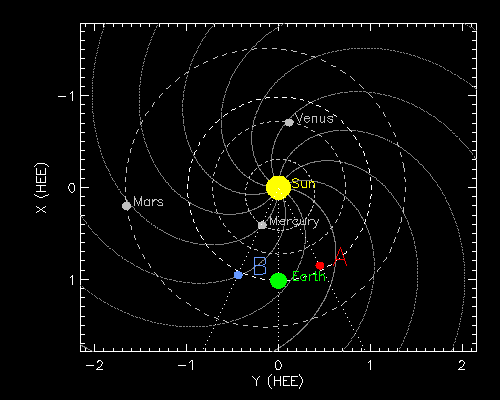
Follow this link for the most up-to-date
realtime
STEREO images
from the beacon telemetry stream. Another way to look at these data is to use
the STEREO
image search
tool
which allows one to combine the images together into a movie. MPEG movies are
also available from the STEREO
browse
pages. The latest browse page is updated hourly.
Other sources for synoptic solar data are:
Space weather information is available from the following sources:
Radio data
A number of Type III radio bursts were seen earlier in the week in
SWAVES
data, particularly from Behind. These events do not have clear GOES X-ray
flares associated with them. The radio events on May 19th have been associated
with an unnumbered plage region between active regions 10994 and 10996. This
region will be well behind the limb as seen from Mars during the Phoenix
landing. The source region for the May 20 event has not yet been identified,
but may well be from the same general area of the Sun. No significant radio
events have been seen since May 20.
Extrapolated image
The following image shows an extrapolation of the appearance of the Sun from
Mars during the landing, based on recent STEREO Behind beacon imagery. This
image will be periodically updated. A small active region is seen near the
western limb, close to the equator. This active region may be the source of
the type III radio bursts seen by SWAVES.
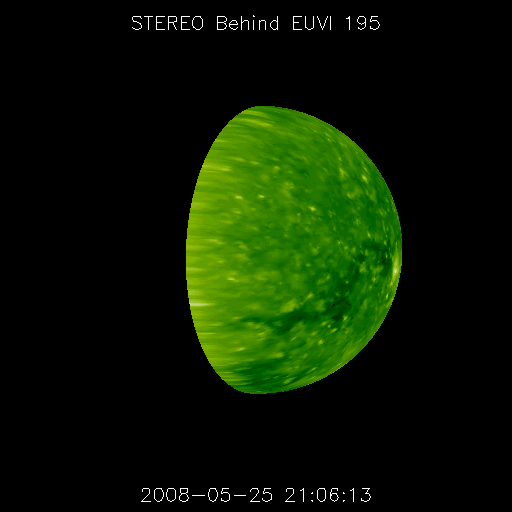
Previous solar rotation
The Carrington longitude of Mars at the time of the Phoenix landing is 112.4
degrees. This same longitude from the previous solar rotation pertained for
STEREO Ahead on
May 7,
and for Behind on
May 3.
The Ahead images below are thus representative of the appearance of the Sun as
seen from Mars based on the previous solar rotation. The appearance is quite
unremarkable, with one small active region in the southeast. The solar wind
data below from the previous solar rotation also shows nothing remarkable going
on.
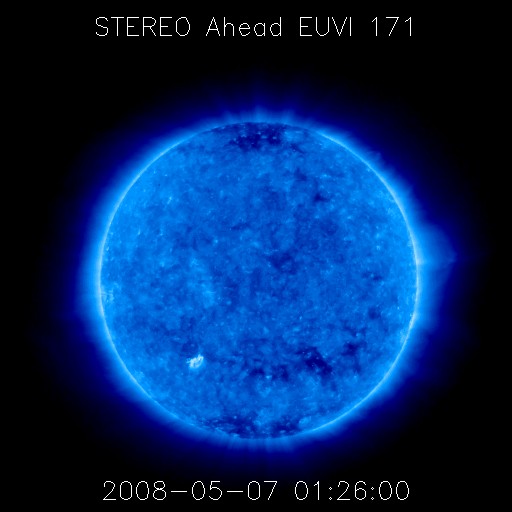
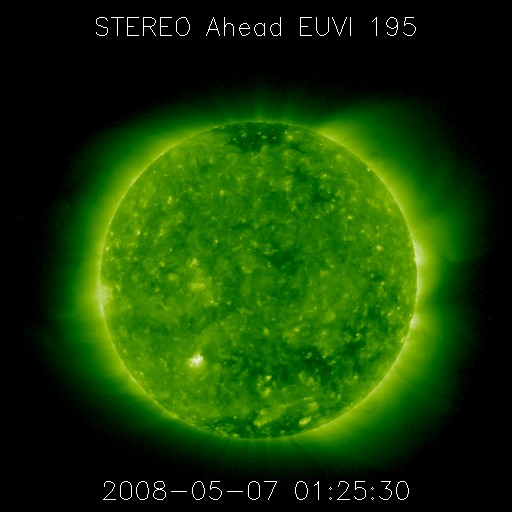
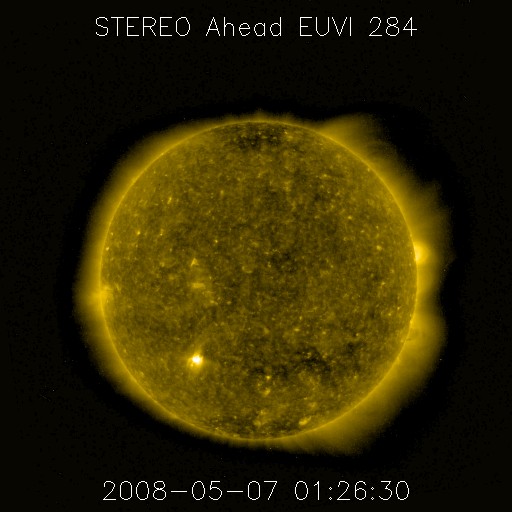
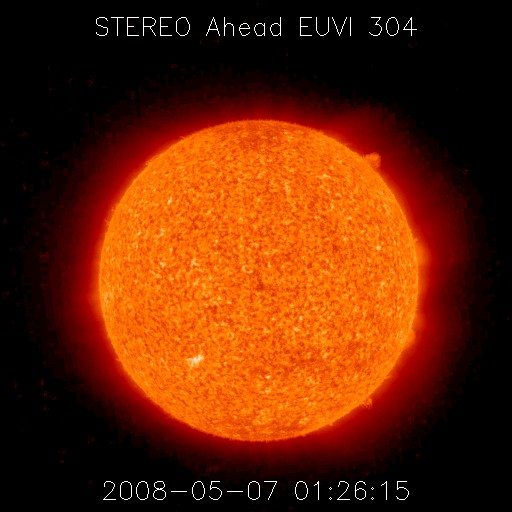
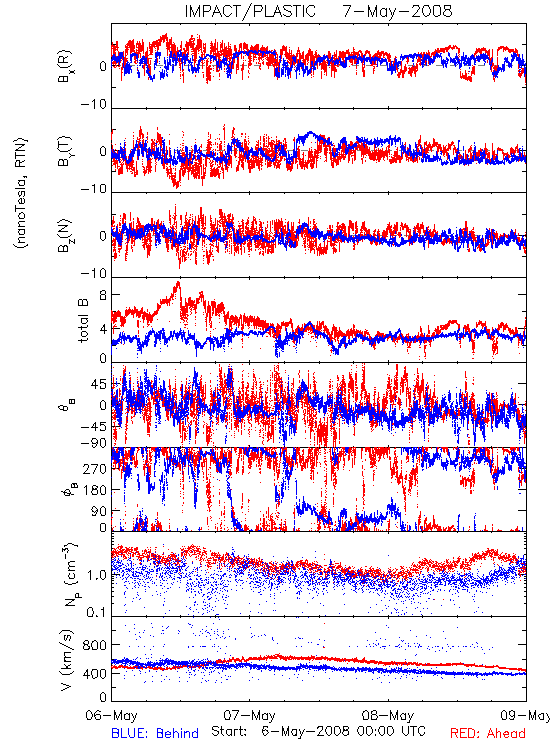
Last Revised: Friday, 23-May-2008 16:15:14 UTC
Responsible NASA Official: ![[email address: Therese.A.Kucera<at>nasa<dot>gov]](/img/kucera_email1.jpg)
Accessibility
Privacy Policy and Important Notices
Feedback and comments: webmaster
|